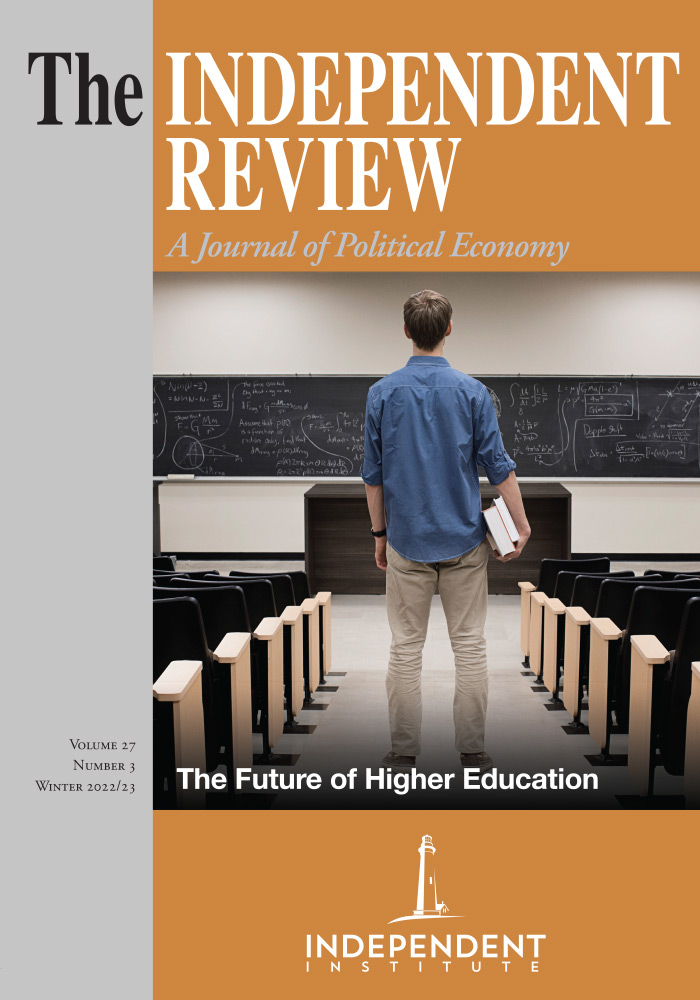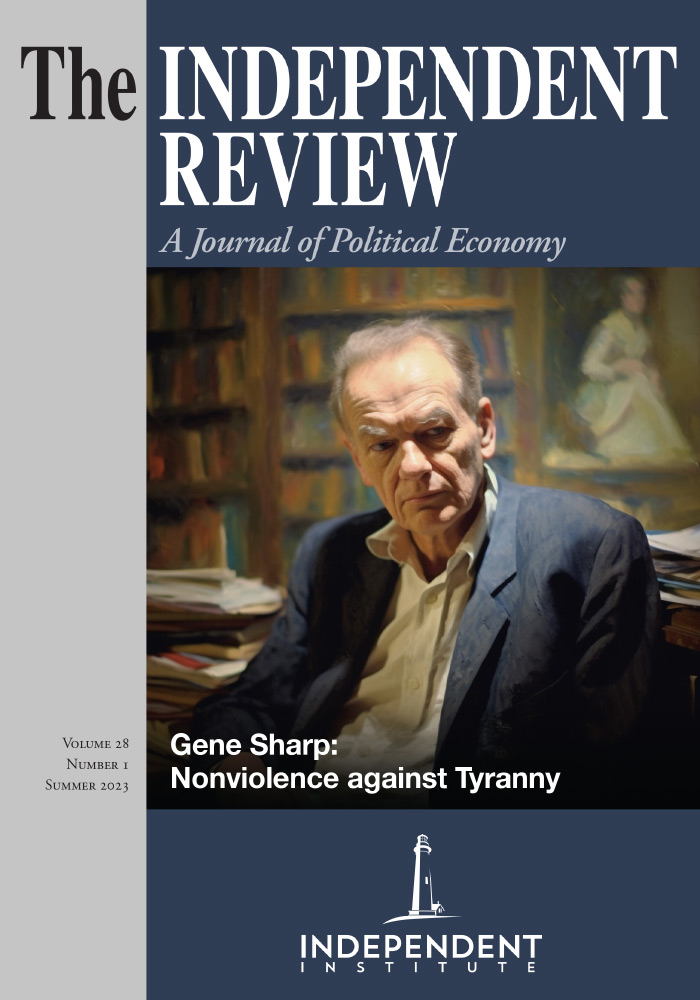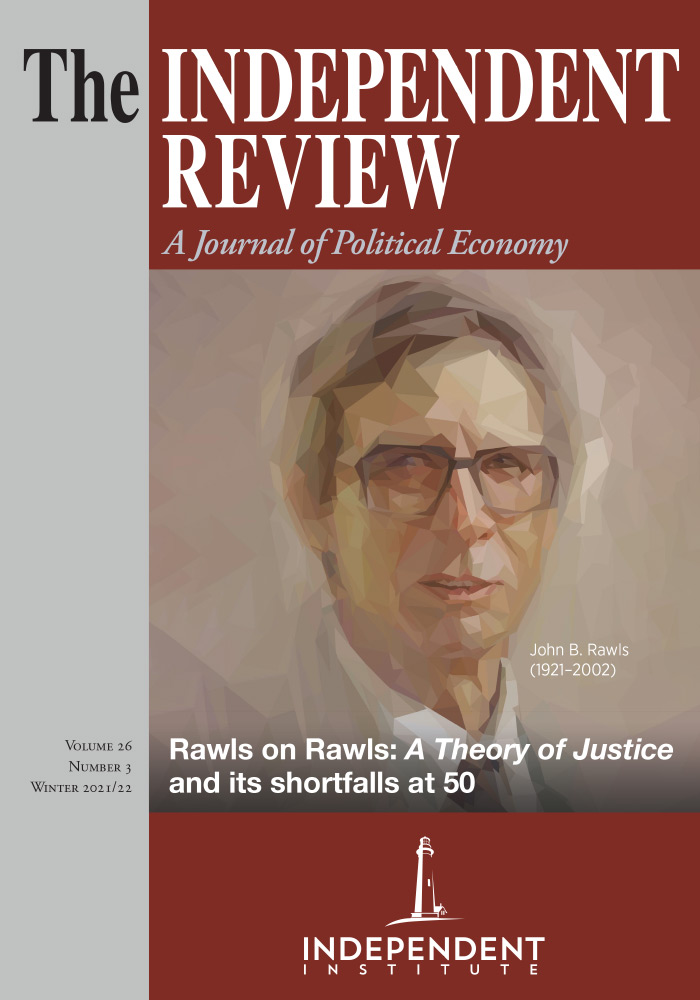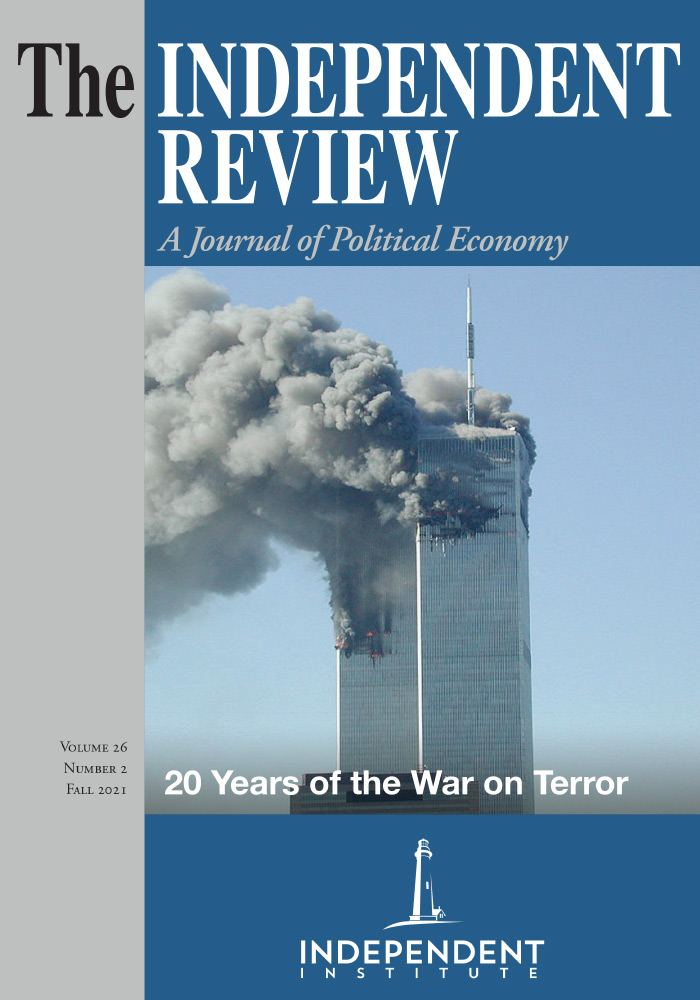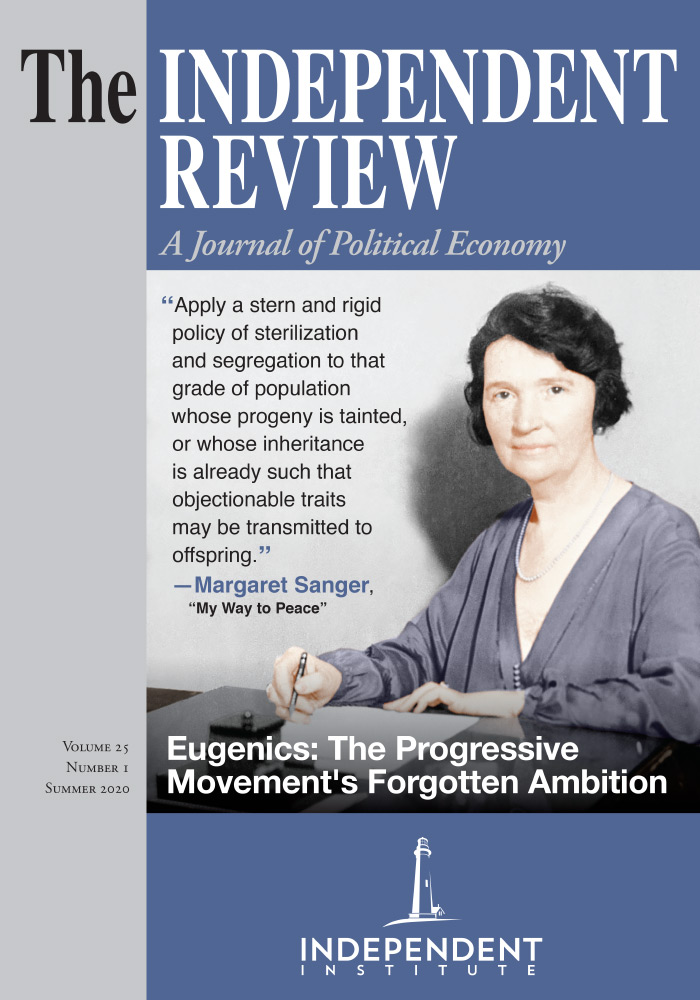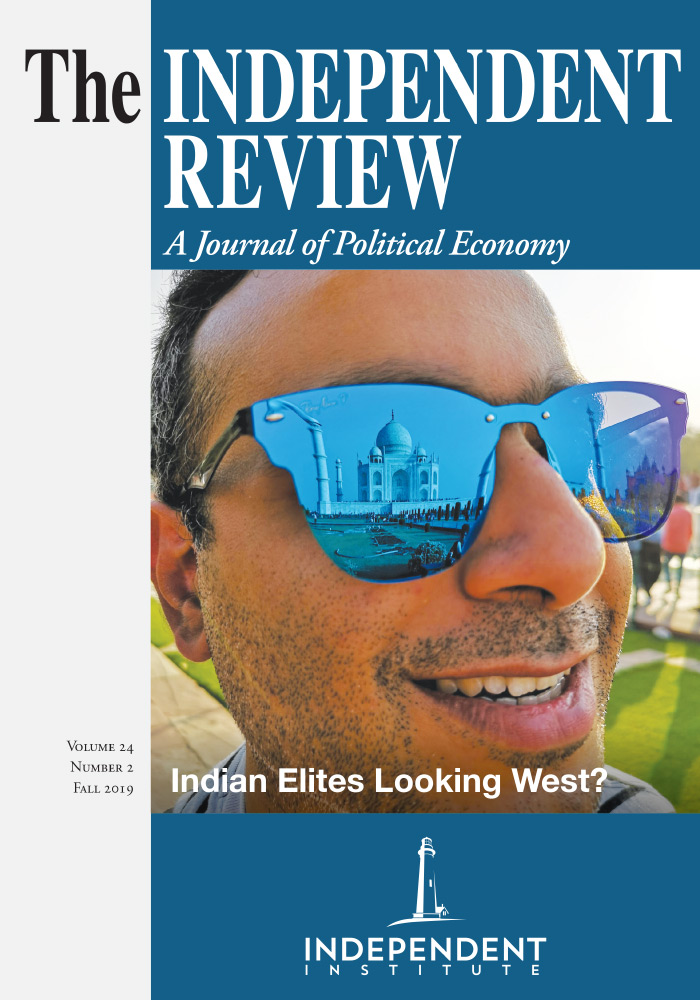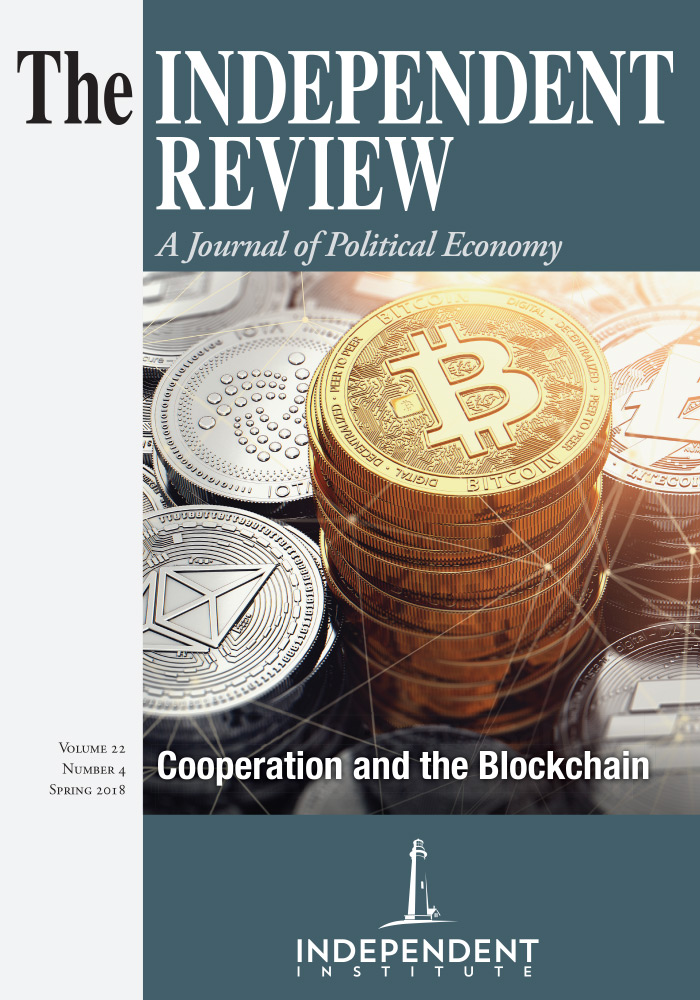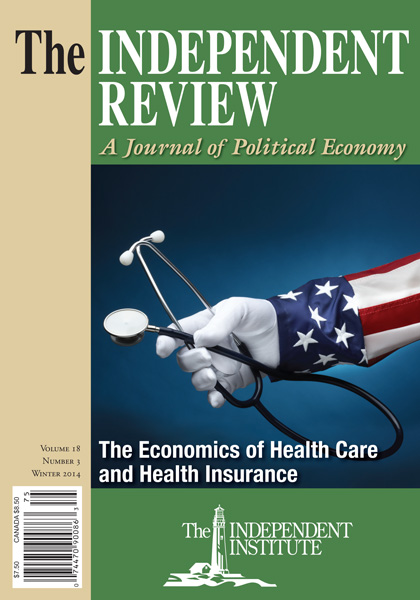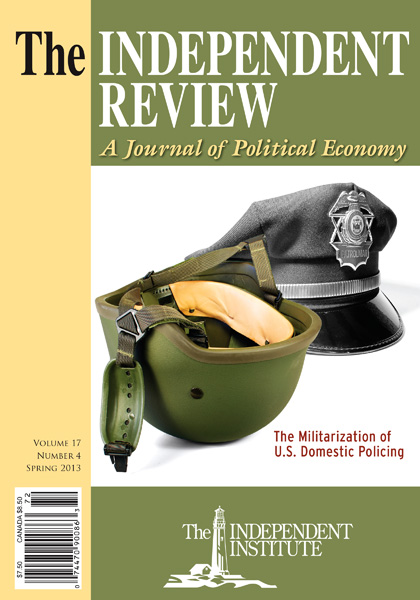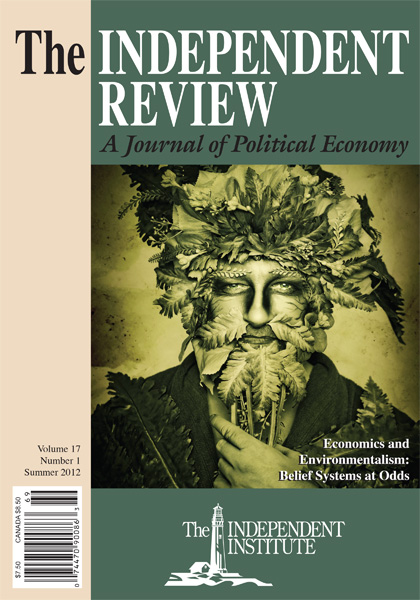American higher education’s strong points include research excellence and a decentralized structure, but it is increasingly expensive and inefficient, time spent by students on academics continues to ebb, while academic freedom and intellectual diversity erodes. This essay predicts that residential colleges and universities will survive (possibly with significant changes in the form of educational delivery)—and lists a slew of predictions, including a weakening of tenure and an expansion of federal control.
Article
In describing the state of American higher education today, it is hard to improve upon Charles Dickens’s memorable opening lines in A Tale of Two Cities:
It was the best of times, it was the worst of times, it was the age of wisdom, it was the age of foolishness, it was the epoch of belief, it was the epoch of incredulity, it was the season of Light, it was the season of Darkness, it was the spring of hope, it was the winter of despair, we had everything before us, we had nothing before us....
Dickens was remarkably prescient. By many indicators, the United States has the best system of higher education of any nation in the world. Our universities dominate the world rankings, and large numbers travel to America from all over the planet to attend them. But simultaneously, there is abundant evidence that America’s universities are in decline and in trouble. Vast numbers of students fail to even graduate, or they take jobs traditionally filled by high school graduates. Our global research leadership is starting to slip as other nations increase research resources dramatically, enrollments have been falling, academic freedom is increasingly imperiled, and public confidence is at a low ebb. Borrowing from an old but recently revived television quiz show, “Will the real American higher education please stand up?” To do that, we need to look at the good, the bad, and the truly ugly. We have abundant amounts of all three.
The Good: Intellectual Diversity and Competition
America is truly unique in the number of institutions of higher education run largely in a decentralized fashion, with many different educational philosophies and specialties, competing often fiercely with other educational enterprises. Regarding so-called private schools, the United States has large numbers, educating about one-fourth of college students pursuing bachelor’s degrees, and an even larger proportion of those attending the perceived best and most selective institutions. Private schools provide something for everyone: the religious, the agnostic, the academic wunderkinds, the progressively woke, even intellectually clueless party animals and jocks wanting to socialize more than to learn. Yet diversity is considerable even among government-controlled institutions. Instead of one government running the schools, we have dozens if not hundreds. Each of the fifty states and other territories has its own government schools, with no uniform curriculum, and variations in how faculty and students are selected. Within states, degrees of uniformity differ greatly (e.g., California has more than Ohio or Texas), but most individual institutions have at least some freedom in devising their own curriculum, their admission and faculty hiring criteria, and so forth. This promotes needed intellectual diversity and intercollegiate competition.
For most of its history, the U.S. government has played a minimalist role in higher education. Although federal-land grant universities began about 230 years after Harvard College was founded in 1636, they were firmly under state, not federal, control, and major federal financial support to students and schools largely began in the middle of the twentieth century, after most of the existing collegiate infrastructure was firmly established.
The federal student loan programs, whose large expansion began in the 1960s and 1970s, however, led to increased federal involvement, enhanced by the creation of the U.S. Department of Education in 1978, significantly increasing federal regulatory control over U.S. colleges and universities, reducing campus diversity at least modestly and ultimately individual choice and competition. The all-powerful national education ministry common in countries like France and Germany is increasingly being duplicated in the United States, somewhat diluting America’s higher education exceptionalism centered on private institutions and a multiplicity of state universities operating within a federal system of government. Also, a fervent emphasis on academic merit, a hallmark of America’s colleges for centuries, seems to be somewhat diluted by increased political involvement and control, and greater emphasis on equalizing educational opportunities by race, gender, income, ethnicity, and so on.
The Good: America’s Research Exceptionalism
A second form of American higher educational exceptionalism has been the development, mostly in the twentieth century, of dozens of major research universities, some also with large medical centers training physicians and hospitals serving patients, in addition to performing important medical research. The Germans are rightly credited with founding the modern research university model, but in the twentieth century the Americans not only emulated Europeans but far exceeded them in the scale of serious academic research, much of it financed by federal grants from agencies such as the Defense Department, National Institutes of Health, and the National Science Foundation. By the last decade of the twentieth century, 70 percent of the scientific Nobel Prizes were awarded to individuals with strong association with American universities (Vedder 2019, 10). As of 2019, sixteen of the top twenty-five universities in the world in the Times Higher Education rankings were American schools (rankings largely determined by research activity).
A hallmark of most of the twentieth-century expansion of funded research: most decisions on allocating appropriated funds were largely made by scientists based predominantly on academic merit, not allocated by politicians and a vast federal administrative state carefully considering electoral politics. Additionally, a secondary but useful set of privately financed research institutes and foundations increased research diversity and a healthy competition in the creation and dissemination of ideas and knowledge: America led the world in developing privately funded think tanks and in philanthropic support from large numbers of private individuals and foundations with varying political and philosophical orientations, covering a vast array of areas of inquiry about the human condition and environment.
The Bad: Increasing Expenses and Inefficiency
By any criteria, American universities became vastly more expensive after World War II and especially after the late 1970s. That holds if one looks at the price students pay (tuition fees), or the broader perspective of total spending per student. While the productivity of workers in the broader American economy was rising roughly 2 percent a year from at least 1870 to recently, in higher education for several decades it has been true that it takes more faculty and, especially, more noninstructional staff to educate a given number of students than previously. To be sure, colleges produce a multitude of goods and services in addition to teaching undergraduates: everything from medical services, to food, housing, sports entertainment, and socially useful research. But it strains credulity to believe that labor productivity in higher education has grown significantly, given the development of substantial administrative bloat. The cost of universities has been rising faster than that of smart phones, automobiles, wheat, or electricity—other valuable things we consume.
Looking at tuition fees, from 1840 to nearly 1980, I estimate they rose roughly 1 percent annually more than overall inflation (Vedder 2019), which some have attributed to the labor-intensive nature of instruction (Baumol and Bowen 1966, Archibald and Feldman 2011). For the most part, until recently the mode of instruction had not changed drastically since Socrates educated the youth of Athens 2,400 years ago. The substitution of capital incorporating technological innovations for labor, the hallmark of the Industrial Revolution, simply did not happen in colleges throughout the nineteenth and twentieth centuries. However, because incomes were rising even faster than tuition fees before 1980, college was nonetheless generally becoming more affordable. From 1980 until very recently, however, fees rose on average close to 3 percent annually after adjusting for general inflationary pressures, far more than income growth, meaning college was becoming less affordable, even as prosperity and technological progress made other things, such as electronic gadgets, food, airplane travel, and larger homes, more affordable.
In the last few years, enrollments have fallen partly because of rising college prices and an increased awareness of the financial risks of attending college, manifested in large unpaid student loans. With that, tuition fees have stabilized and even declined slightly in real terms, although very recent trends are possibly distorted by the COVID pandemic, associated extraordinary federal funding, and unanticipated inflationary pressures. Looking at broader measures of college costs, total spending per student is considerably higher in America than in most other comparable advanced industrialized nations.
The introduction of federally subsidized loan programs may well be one of the best examples of the law of unintended consequences. As early as the 1980s, Education Secretary William Bennett (1987) argued that colleges raised fees far more aggressively after federal loans were introduced, capturing most of the economic advantages intended for students. Other researchers have largely confirmed the validity of Bennett’s insight (Cellini and Goldin 2014; Lucca, Nadauld, and Shen 2019).
The Bad: Deteriorating Learning Outcomes and Postgraduate Employment Opportunities
Although higher education produces several different instructionally related services, two outcomes are paramount. First, college should expand knowledge acquisition by students, traditionally young individuals with high school diplomas. Second, by providing knowledge along with other virtues, such as enhanced wisdom, problem-solving skills, civility, and maturity, college should help prepare students for responsible jobs or for further professional training.
For a sector devoted to increasing knowledge, however, higher education has surprisingly sketchy indicators of the amount of acquisition of knowledge and ideas by its own students. Institutions are constantly testing students before and throughout their college career, but seldom give standardized entrance and exit examinations providing straightforward estimates of knowledge and critical reasoning skill acquisition.
That said, a good deal of evidence suggests even basic literacy (especially mathematical) among college students is in decline, or is below that of many other industrialized nations (National Center for Education Statistics 2007, 2020). Some testing for student acquisition of basic core knowledge shows little learning during the college years (Vedder 2019, 66). Richard Arum and Josipa Roksa (2011) show that acquisition of critical reasoning and writing skills has been extremely limited in even prestigious American universities. This is perhaps not surprising given evidence that today’s college students spend far less time on academics than those in the mid-twentieth century (Babcock and Marks 2011) but earn higher grades (Rojstaczer 2016). Frustration over shortages of skilled college graduates has led to new alternatives, including non-degree-granting special skill schools like coding academies, and for some employers, including prominent Silicon Valley companies, easing previously high degree requirements for new workers.
Economic theory suggests that workers’ pay is generally determined by their marginal revenue product, so more-productive college graduates earn far more than those with less education. For decades, however, college has been considered to be something of a signaling device (Spence 1973). In particular, Bryan Caplan (2017) has argued persuasively that the college earnings differential is mostly not the result of vocational or intellectual skills gained in college but rather of attributes like intrinsic intelligence, discipline, honesty, and so on that tend to be much higher among entering college students than those forgoing advanced education. Additionally, other evidence shows a sizable proportion (perhaps one-third) of college graduates are “underemployed,” taking jobs traditionally filled by high school graduates (New York Federal Reserve Bank 2021).
The Ugly: Decline in Academic Freedom and Increased Intolerance of Intellectual Diversity
Whereas early American universities were often known for promoting considerable uniformity in teaching a classical curriculum, in the nineteenth and especially in the twentieth century, they increasingly became known as “marketplaces of ideas,” priding themselves as tolerating, even encouraging and celebrating intellectual diversity. Although there was a short but notable period of restrictions on Communist-leaning faculty and doctrine in the McCarthy era around 1950, for most of the past century a lively but civil discussion of alternative political, religious, and other perspectives has been considered a hallmark of vibrant American universities.
In the last decade, however, there is growing evidence of campus intolerance for some forms of academic discourse. Surveys show a marked and increasing left-of-center political orientation among faculty, suggesting that alternative perspectives are perhaps not presented or are severely underrepresented in courses (Klein and Stern 2005; Langbert and Stevens 2020). A “cancel” or “call-out” culture has been demonstrated on some campuses by either disinviting or shouting down speakers whose views are outside the progressive campus mainstream (Lukianoff and Haidt 2018). Students are increasingly afraid to speak views inconsistent with the predominantly leftish ideology. As one University of Virginia student put it, “My college experience has been defined by strict ideological conformity. ...I sometimes feel afraid to fully speak my mind” (Camp 2022).
To be sure, not all of higher education is the same: there are schools with diverse campus environments, including schools like Hillsdale College and Grove City College with a right-of-center political orientation, as well as others with a strong religious emphasis. Also, necessity is the mother of invention: growing discontent with perceived intolerant, woke-like college cultures is leading to new campus initiatives such as the recently launched University of Austin.
The Future
Prognosticators of higher education are all over the map in their views of the future, but most that I have read predict great change. Let me comment on just four. The late management guru Clayton Christensen, who emphasized the importance of “disruptive innovation” (Christensen, Horn, and Johnson 2008), predicted many traditional universities would close and that online education was enormously important in their future (Christensen and Eyring 2011). More recently, Ronald Daniels, president of Johns Hopkins, thinks American democracy is in grave need of revitalization and strengthening, and that universities can ensure their own future relevance by concentrating on making that happen (Daniels 2021). Arthur Levine and Scott Van Pelt (2021) likewise stress the need for dramatic change, showing how other sectors, such as newspapers and film, have radically pivoted to deal with changing technology. Universities trace their origins back hundreds of years, and Ronald Musto (2022) thinks modern attacks on universities have parallels in King Henry VIII’s dissolution of the monasteries, nearly one hundred years before America’s first college opened.
My personal take is somewhat more nuanced, foreseeing big change but a bit less cataclysmic. Spoiler alert: economists from the time of Thomas Malthus (1798) have often done a bad job of forecasting the future. With that warning, consider the following. Colleges and universities take diverse forms and perform different tasks, so future outcomes will vary enormously by institution. Historically, demand for higher education has been relatively income-elastic: spending on it has risen even faster than incomes, although that may be changing. If economic growth continues, prosperous Americans will probably robustly support the relatively nonacademic role of colleges as a socialization device for those transitioning to adulthood. Hence, I think residential colleges and universities will survive, although possibly with significant changes in the form of educational delivery. I suspect recent enhanced government financial assistance for higher education may be transitory, given diminishing public support of universities, growing federal unfunded liabilities, and the near-scandalous inefficiencies in the mode of delivery of higher education services. New funding models could evolve. For example, governments might eventually fund customers (students) rather than providers, and the dysfunctional federal student assistance programs may well be dramatically altered. To alleviate loan defaults, colleges may be forced to have some “skin in the game” regarding student loan debt. Students may sell equity in themselves instead of only debt, and income share agreements will substitute for some loans.
Old practices such as tenure will likely die or become weakened. The gross inefficiency of six- or even eight-year Ph.D. programs may lead to reform. New methods of measuring success should and probably will evolve, and merely having a degree should play a smaller credentialing role than at present. The income-enhancing “sheepskin effect” of a college diploma should become less compelling as competing forms of developing vocational skills, such as certificated programs (e.g., coding academies), continue to grow.
The non-undergraduate dimensions of higher education should continue to grow, such as funded scientific research and graduate studies. Similarly, in an aging society I find it likely that medical education will continue to robustly expand. The outlook for a peculiarly American collegiate anomaly, intercollegiate athletics, is quite murky, but likely will undergo big changes. Will the distinction between “private and public” control of education, already blurred, continue to diminish? Will the creeping centralization of higher education be reversed? I hope so but am not terribly optimistic.
I not so confidently expect that the recent alarming deemphasis on pure academic achievement will eventually reverse. We need tests like the ACT and SAT. Indeed, developing a new National College Equivalence Examination could help restore academic standards. The obsession with physical and economic characteristics of members of collegiate communities—race, gender, sexual orientation, ethnicity, and so on—should in time subside somewhat (thankfully), as will, probably, viewpoint intolerance; history shows prevailing collegiate attitudes change a good deal over time.
Conclusion: The “Best of Times, Worst of Times” Revisited
Universities may be expensive, inefficient, and intolerant. But what are the alternatives? Imitating Winston Churchill, we can argue that “universities are the worst form of higher education—except all others.” So it is likely that many will survive for decades if not centuries to come. But another statement with a Churchillian rhetorical flavor posted in my office comes to mind: “Never have so many spent so much, studying so long, but learning so little.” Clearly higher education is ripe for serious reform.
References
Archibald, Robert B., and David H. Feldman. 2011. Why Does College Cost So Much? New York: Oxford University Press.
Arum, Richard, and Josipa Roksa. 2011. Academically Adrift: Limited Learning on College Campuses. Chicago: University of Chicago Press.
Babcock, Philip and Mindy Marks. 2011. The Falling Time Cost of College: Evidence from a Half Century of Time Use Data. Review of Economics and Statistics, 93, no 2: 468–78.
Baumol, William J., and William G. Bowen. 1966. Performing Arts: The Economic Dilemma. New York: Twentieth Century Fund.
Bennett, William. 1987. Our Greedy Colleges. New York Times, February 18.
Camp, Emma. 2022. I Came to College Eager to Debate. I Found Self-Censorship Instead. New York Times, March 7.
Caplan, Bryan. 2017. The Case against Education: Why the Education System Is a Waste of Time and Money. Princeton, N.J.: Princeton University Press.
Cellini, Stephanie Riegg, and Claudia Goldin. 2014. Does Federal Student Aid Raise Tuition? New Evidence on For-Profit Colleges. American Economic Journal: Economic Policy 6, no. 4, 174–206.
Christensen, Clayton M., and Henry J. Eyring. 2011. The Innovative University: Changing the DNA of Higher Education. New York: John Wiley Sons.
Christensen, Clayton M., Michael B. Horn, and Curtis W. Johnson. 2008. Disrupting Class: How Disruptive Innovation Will Change the Way the World Learns. New York: McGraw-Hill.
Daniels, Ronald J., with Grant Sheve and Phillip Spector. 2021. What Universities Owe Democracy. Baltimore: Johns Hopkins University Press.
Klein, Daniel B. and Charlotta Stern. 2005. Professors and Their Politics: The Policy Views of Social Scientists. Critical Review, 17, nos. 3–4, 257–303.
Langbert, Mitchell, and Sean Stevens. 2020. Partisan Registration and Contributions of Faculty in Flagship Colleges. National Association of Scholars, January 17.
Levine, Arthur, and Scott Van Pelt. 2021. The Great Upheaval: Higher Education’s Past, Present, and Uncertain Future. Baltimore: Johns Hopkins University Press.
Lucca, David O., Taylor Nadauld, and Karen Shen. 2019. Credit Supply and the Rise in College Tuition: Evidence from the Expansion in Federal Student Aid Programs. Review of Financial Studies 32, no. 2, 423–66.
Lukianoff, Greg, and Jonathan Haidt. 2018. The Coddling of the American Mind. New York: Penguin Press.
Malthus, Thomas R. 1798. An Essay on the Principle of Population. London: J. Johnson.
Musto, Ronald G. 2022. The Attack on Higher Education: The Dissolution of the American University. Cambridge, U.K. Cambridge University Press.
National Center for Education Statistics. 2007. 2003 National Assessment of Adult Literacy. March.
———. Digest of Education Statistics. 2020, Table 604.10.
New York Federal Reserve Bank. 2021. Underemployment Rates for College Graduates. May 21. https://www.newyorkfed.org.
Rojstaczer, Stuart. 2016. Grade Inflation at American Colleges and Universities. Gradeinflation.com.
Spence, A. Michael. 1973. Job Market Signaling. Quarterly Journal of Economics 87, no. 3: 355–74.
Vedder, Richard K. 2019. Restoring the Promise: Higher Education in America. Oakland, Calif.: Independent Institute.
| Other Independent Review articles by Richard K. Vedder | ||
| Spring 2024 | Time on the Cross at Fifty | |
| Fall 2022 | Black Liberation through the Marketplace: Hope, Heartbreak, and the Promise of America | |
| Fall 2021 | Four Centuries of Black Economic Progress in America: Ideological Posturing versus Empirical Realities | |
| [View All (7)] | ||

